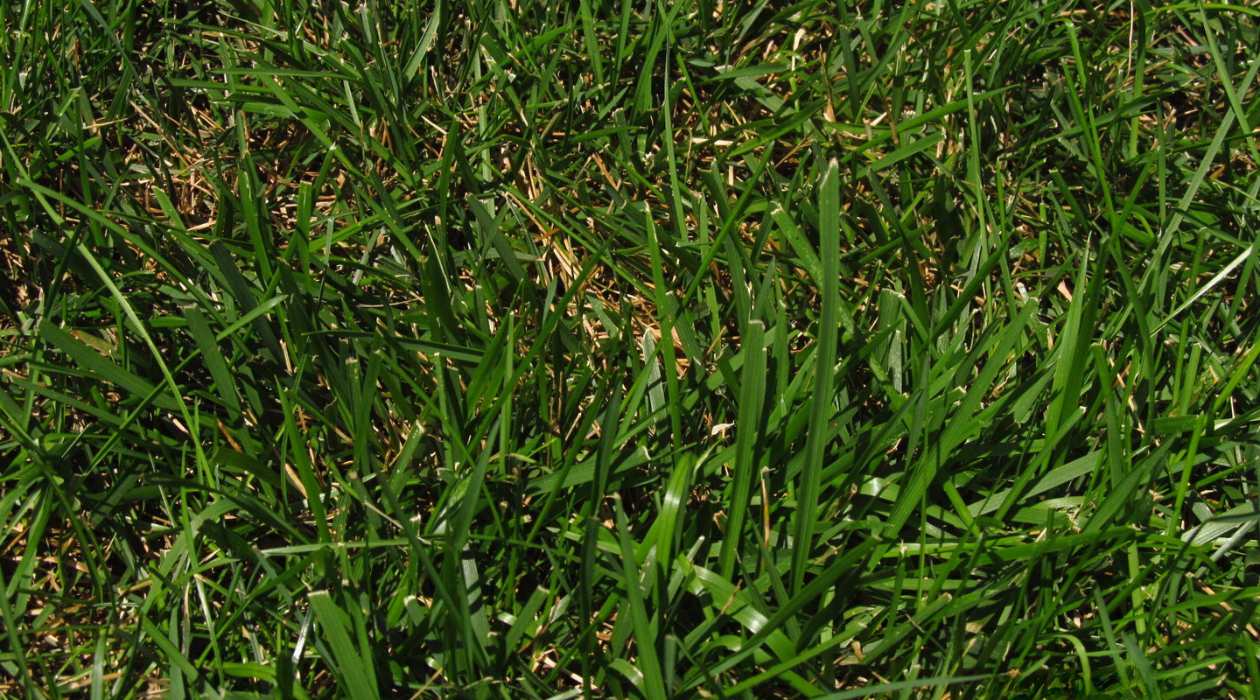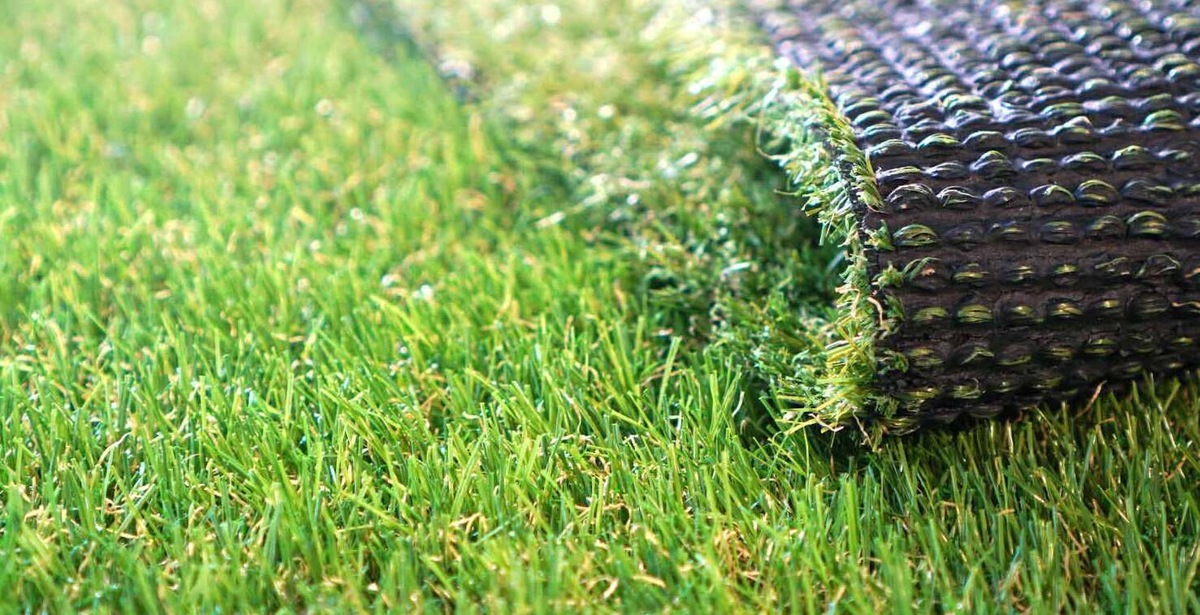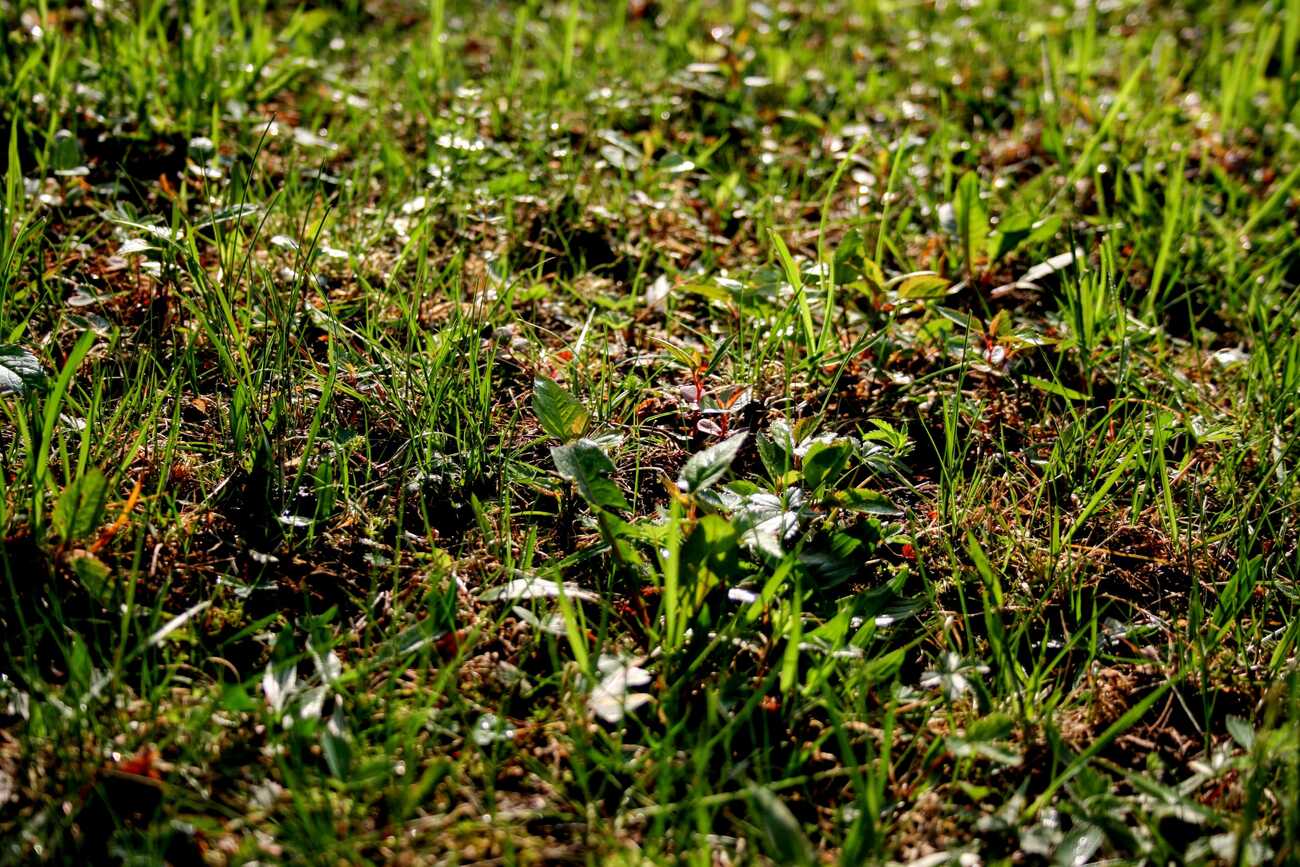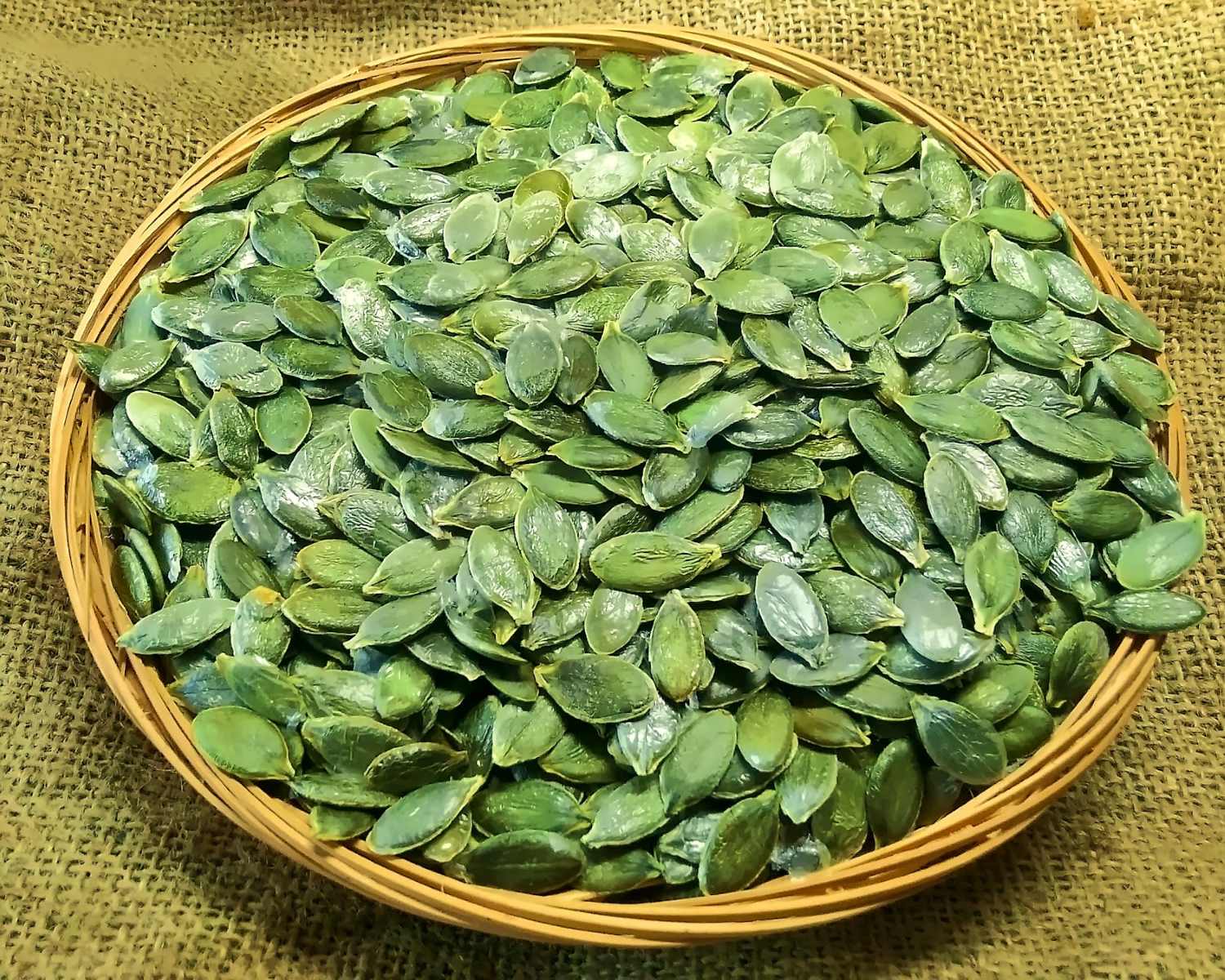Home>Gardening & Outdoor>Landscaping Ideas>Why Is Some Grass Darker Than Others


Landscaping Ideas
Why Is Some Grass Darker Than Others
Modified: August 16, 2024
Discover the reasons behind variations in grass color and get expert landscaping ideas to achieve a lush, uniform lawn. Explore solutions for darker patches and enhance your outdoor space.
(Many of the links in this article redirect to a specific reviewed product. Your purchase of these products through affiliate links helps to generate commission for Storables.com, at no extra cost. Learn more)
Introduction
The lush green expanse of a well-maintained lawn is a sight to behold, evoking feelings of tranquility and natural beauty. However, keen observers may notice variations in the color of grass across different areas. Some patches appear darker and more vibrant, while others seem lighter and less robust. This intriguing phenomenon prompts the question: why is some grass darker than others?
The color of grass is not merely a superficial aspect; it serves as a visual indicator of the overall health and vitality of the lawn. Understanding the factors that contribute to these variations in grass color can provide valuable insights into the intricate dynamics of lawn care and environmental influences.
In this article, we will delve into the multifaceted reasons behind the differing shades of grass, exploring the impact of soil composition, sunlight exposure, water and nutrient levels, grass species, and human intervention. By unraveling these factors, we can gain a deeper appreciation for the complexities of maintaining a vibrant and verdant lawn.
Key Takeaways:
- Grass color varies due to soil, sunlight, water, grass type, and human care. Healthy, vibrant grass needs nutrient-rich soil, good sunlight, proper watering, and mindful maintenance practices.
- Different grass species have unique colors and needs. Understanding these factors helps create a visually captivating lawn. Soil health, sunlight exposure, and human care are crucial for vibrant, lush green grass.
Factors affecting grass color
The color of grass is influenced by a myriad of factors, each playing a crucial role in determining its vibrancy and hue. Understanding these factors is essential for maintaining a healthy and visually appealing lawn. Let's explore the key elements that contribute to the varying shades of grass:
Soil Composition
The composition of the soil directly impacts the color of grass. Soil rich in organic matter and essential nutrients, such as nitrogen, phosphorus, and potassium, fosters lush green growth. Conversely, depleted or compacted soil can hinder nutrient absorption, leading to pale and lackluster grass. Additionally, soil pH levels influence nutrient availability, further affecting the grass's color and overall health.
Sunlight Exposure
Sunlight is a primary driver of photosynthesis, the process through which plants produce energy. Adequate sunlight exposure is crucial for vibrant grass color, as it facilitates robust growth and chlorophyll production. Shaded areas may exhibit lighter grass due to reduced photosynthetic activity, while sun-drenched spots boast deeper, richer hues.
Water and Nutrient Levels
Proper hydration and nutrient supply are essential for maintaining vibrant grass color. Adequate water intake supports metabolic processes and nutrient uptake, promoting healthy green foliage. Conversely, water scarcity can lead to wilting and browning of grass. Balanced fertilization further enhances grass color by providing essential nutrients that contribute to chlorophyll synthesis and overall plant vigor.
Read more: Why Is Grass Better Than Turf
Grass Species
Different grass species exhibit varying shades of green, with some naturally possessing darker pigmentation than others. For instance, Kentucky bluegrass is renowned for its deep emerald hue, while fine fescue may display a lighter, more delicate green. Understanding the inherent color characteristics of specific grass species is integral to achieving a cohesive and visually appealing lawn.
Human Intervention
Human activities, such as mowing, watering, and fertilizing, significantly impact grass color. Proper mowing practices, including maintaining the appropriate grass height, promote healthy growth and vibrant color. Additionally, strategic watering and fertilization regimens tailored to the specific needs of the lawn can enhance grass color and overall vitality.
By comprehending the intricate interplay of these factors, lawn enthusiasts can proactively address the elements influencing grass color, fostering a verdant and visually captivating landscape.
Soil composition
The composition of the soil is a fundamental determinant of grass color and overall lawn health. Soil serves as the foundation from which grass draws essential nutrients, water, and support for root development. A well-balanced soil composition is crucial for fostering vibrant and resilient grass.
Organic matter, including decomposed plant material and microorganisms, enriches the soil, providing a steady supply of nutrients essential for robust grass growth. Nitrogen, phosphorus, and potassium are among the vital nutrients that contribute to the lush green color of grass. These nutrients play pivotal roles in various physiological processes within the grass, including chlorophyll production, which is integral to the plant's ability to harness sunlight and convert it into energy through photosynthesis.
Furthermore, soil pH levels exert a profound influence on nutrient availability and uptake by the grass. Optimal pH levels enable efficient nutrient absorption, promoting healthy green foliage. Acidic or alkaline soil conditions can impede the availability of essential nutrients, leading to deficiencies that manifest as pale or discolored grass.
Compacted soil poses a significant challenge to grass health and color. Compaction restricts root development and impedes the circulation of air, water, and nutrients within the soil. As a result, grass may exhibit signs of stress, such as reduced vigor and pale coloration. Implementing soil aeration practices can alleviate compaction, enhancing nutrient uptake and promoting deeper, more vibrant root growth.
Soil composition also influences water retention and drainage, both of which are critical for maintaining optimal grass color. Well-draining soil prevents waterlogging, which can lead to root suffocation and subsequent yellowing of grass. Conversely, inadequate water retention in sandy soils may result in moisture stress, causing grass to exhibit signs of dehydration and discoloration.
In summary, the soil composition profoundly impacts the color and vitality of grass. By prioritizing soil health through practices such as regular aeration, organic matter enrichment, and pH management, lawn enthusiasts can create an environment conducive to vibrant and resilient grass growth. Understanding the intricate relationship between soil composition and grass color empowers individuals to cultivate thriving, visually captivating lawns.
Sunlight exposure
Sunlight exposure plays a pivotal role in shaping the color and overall health of grass. As the primary energy source for photosynthesis, sunlight is indispensable for the production of chlorophyll, the green pigment responsible for the vibrant coloration of grass. Adequate sunlight exposure is essential for sustaining robust photosynthetic activity, which in turn contributes to the lush green appearance of the lawn.
Areas of the lawn that receive ample sunlight typically exhibit deeper and more vibrant shades of green. The unimpeded access to sunlight enables grass to optimize its photosynthetic efficiency, fostering vigorous growth and chlorophyll synthesis. In contrast, shaded areas may display lighter and less vibrant grass due to reduced exposure to sunlight. The diminished sunlight availability hinders the grass's ability to harness energy, resulting in subdued coloration and potentially slower growth.
Furthermore, the duration and intensity of sunlight exposure influence the grass's response and color development. Prolonged exposure to direct sunlight can stimulate robust chlorophyll production, leading to rich and deep green hues. Conversely, intermittent or limited sunlight exposure may result in variations in grass color, with some areas appearing lighter or displaying hints of yellowing due to reduced photosynthetic activity.
Understanding the nuances of sunlight exposure empowers individuals to make informed decisions regarding lawn maintenance and landscaping. Strategic planning of landscaping elements, such as trees, shrubs, and structures, can optimize sunlight distribution across the lawn, ensuring that all areas receive adequate exposure for healthy grass growth. Additionally, regular monitoring of sunlight patterns throughout the day and across different seasons can provide valuable insights into the areas of the lawn that may require targeted interventions to enhance sunlight exposure and promote consistent grass coloration.
In essence, sunlight exposure serves as a cornerstone of vibrant and healthy grass. By recognizing its profound impact on grass color and leveraging this knowledge to optimize sunlight distribution, individuals can cultivate visually captivating and resilient lawns that thrive under the nurturing embrace of sunlight.
Read more: Why Is Clover Better Than Grass
Water and nutrient levels
Water and nutrient levels play a pivotal role in shaping the color and overall vitality of grass. Adequate hydration and nutrient supply are essential for sustaining vibrant and resilient grass, while imbalances or deficiencies can manifest as discoloration and diminished vigor.
Proper hydration is fundamental to the health of grass, as water serves as a conduit for essential nutrients and supports various physiological processes within the plant. Optimal water intake enables efficient nutrient uptake, promoting robust growth and vibrant green foliage. In contrast, inadequate hydration can lead to moisture stress, causing grass to exhibit signs of wilting, browning, or discoloration. Conversely, excessive water accumulation due to poor drainage can suffocate the roots and lead to yellowing or browning of the grass.
Balanced fertilization is integral to maintaining vibrant grass color and overall health. Fertilizers provide essential nutrients, including nitrogen, phosphorus, and potassium, which are vital for chlorophyll synthesis, metabolic processes, and overall plant vigor. Nitrogen, in particular, contributes to the rich green coloration of grass, enhancing its visual appeal. However, excessive nitrogen application can lead to rapid growth and potential stress on the grass, resulting in a diluted green hue or increased susceptibility to diseases.
Understanding the specific nutrient requirements of the grass species in the lawn is crucial for tailoring fertilization regimens to optimize color and vitality. Different grass species have varying nutrient needs, and a targeted approach to fertilization can ensure that the grass receives the essential elements necessary for vibrant growth. Additionally, soil testing can provide valuable insights into nutrient deficiencies or imbalances, guiding the application of customized fertilization programs to address specific color-related concerns.
Moreover, the timing and frequency of watering and fertilization practices significantly impact grass color and overall health. Strategic scheduling of watering sessions, particularly during periods of heat or drought, can prevent moisture stress and maintain vibrant grass color. Similarly, a well-planned fertilization schedule, aligned with the grass's growth cycles and seasonal nutrient demands, can bolster coloration and resilience.
In essence, water and nutrient levels are foundational determinants of grass color and vitality. By prioritizing proper hydration, balanced fertilization, and tailored nutrient management, individuals can cultivate visually captivating and resilient lawns that showcase the vibrant beauty of healthy, lush green grass.
Grass species
The diverse array of grass species contributes to the captivating tapestry of lawn landscapes, each exhibiting unique characteristics that influence the color and visual appeal of the turf. Understanding the inherent color variations among different grass species is integral to creating a cohesive and visually captivating lawn.
Grass species such as Kentucky bluegrass, known for its deep emerald hue, and perennial ryegrass, prized for its vibrant green coloration, are revered for their aesthetic contributions to lawns. These species possess inherent pigmentation that imparts rich and robust green hues, elevating the visual allure of the turf. In contrast, fine fescue varieties may display lighter, more delicate shades of green, adding a nuanced dimension to the overall color palette of the lawn.
Moreover, the leaf texture and density of different grass species contribute to their distinct visual impact. Fine-bladed grasses, such as fine fescue and colonial bentgrass, exhibit a delicate and refined appearance, while broader-leaved species like Kentucky bluegrass and tall fescue convey a lush and substantial aesthetic. These textural variations influence light reflection and absorption, further shaping the perceived color of the grass.
Additionally, the adaptability of grass species to specific environmental conditions influences their color and resilience. Cool-season grasses, including Kentucky bluegrass, perennial ryegrass, and fine fescue, thrive in regions with moderate temperatures, displaying vibrant green coloration during the growing season. In contrast, warm-season grasses, such as Bermuda grass and Zoysia grass, exhibit distinct color variations, ranging from deep green to golden hues, based on their response to temperature and sunlight.
Understanding the color characteristics and growth habits of different grass species empowers individuals to make informed decisions regarding lawn establishment and maintenance. Selecting grass species that align with the local climate and environmental conditions can ensure optimal coloration and resilience, contributing to the creation of visually captivating and sustainable lawns.
In essence, the diverse array of grass species enriches the visual tapestry of lawns, offering a spectrum of colors, textures, and resilience. By embracing the inherent beauty of various grass species and leveraging their unique color characteristics, individuals can curate vibrant and visually captivating landscapes that celebrate the natural diversity and allure of grass.
Human intervention
Human intervention plays a pivotal role in shaping the color and overall health of grass within a lawn environment. The manner in which individuals engage in lawn care practices, including mowing, watering, and fertilizing, significantly influences the vibrancy and visual appeal of the grass.
Proper mowing practices are essential for maintaining healthy grass color. The frequency and technique of mowing directly impact the grass's growth and appearance. Regular mowing at the appropriate height promotes vigorous growth and lush green coloration. Conversely, infrequent or improper mowing can lead to uneven growth and pale, lackluster grass. By adhering to recommended mowing practices tailored to the specific grass species, individuals can foster consistent and vibrant grass color.
Strategic watering regimens are integral to sustaining healthy grass color. Adequate and consistent watering supports the grass's metabolic processes and nutrient uptake, contributing to vibrant green foliage. However, overwatering or underwatering can lead to color variations and compromise the overall health of the grass. By implementing targeted watering schedules aligned with the grass's moisture needs and environmental conditions, individuals can maintain uniform and vibrant grass coloration.
Fertilization practices tailored to the specific nutrient requirements of the grass species are instrumental in enhancing grass color and vitality. Balanced fertilization programs provide essential nutrients that contribute to chlorophyll synthesis and overall plant vigor, promoting rich and vibrant green hues. However, excessive or inadequate fertilization can lead to color imbalances and potential stress on the grass. By adopting customized fertilization approaches based on soil testing and grass species requirements, individuals can optimize grass color and resilience.
Furthermore, proactive weed and pest management contribute to the overall vibrancy of the grass. Weeds and pests can compete with the grass for essential nutrients and water, leading to color variations and compromised health. By implementing effective weed control and pest management strategies, individuals can safeguard the grass's color and vitality, fostering a visually captivating and resilient lawn.
In essence, human intervention through mindful mowing, strategic watering, tailored fertilization, and proactive weed and pest management plays a pivotal role in shaping the vibrant and visually captivating color of grass within a lawn environment. By embracing informed and proactive lawn care practices, individuals can cultivate lush, resilient, and visually captivating landscapes that celebrate the natural beauty of healthy, vibrant green grass.
Grass may appear darker due to different species, soil nutrients, or shade. To maintain consistent color, ensure even watering and fertilization.
Conclusion
The varying shades of grass across lawns are a testament to the intricate interplay of natural and human-influenced factors that shape the color and overall vitality of the turf. From the rich emerald hues of Kentucky bluegrass to the delicate shades of fine fescue, the diverse array of grass species contributes to the captivating tapestry of lawn landscapes, each exhibiting unique color characteristics and resilience. Soil composition, sunlight exposure, water and nutrient levels, and human intervention collectively influence the visual allure and health of grass, offering valuable insights into the complexities of lawn care and environmental influences.
Understanding the profound impact of soil composition on grass color underscores the significance of prioritizing soil health through practices such as organic matter enrichment, pH management, and soil aeration. By fostering a nutrient-rich and well-structured soil environment, individuals can create an optimal foundation for vibrant and resilient grass growth.
Sunlight exposure emerges as a cornerstone of vibrant and healthy grass, with its pivotal role in sustaining robust photosynthetic activity and chlorophyll production. Strategic planning of landscaping elements and regular monitoring of sunlight patterns empower individuals to optimize sunlight distribution across the lawn, ensuring consistent and vibrant grass coloration.
The fundamental role of water and nutrient levels in shaping grass color underscores the importance of proper hydration, balanced fertilization, and tailored nutrient management. By prioritizing targeted watering schedules, customized fertilization programs, and proactive weed and pest management, individuals can cultivate visually captivating and resilient lawns that showcase the vibrant beauty of healthy, lush green grass.
Human intervention through mindful mowing, strategic watering, tailored fertilization, and proactive weed and pest management emerges as a pivotal factor in shaping the vibrant and visually captivating color of grass within a lawn environment. By embracing informed and proactive lawn care practices, individuals can cultivate lush, resilient, and visually captivating landscapes that celebrate the natural beauty of healthy, vibrant green grass.
In essence, the multifaceted reasons behind the differing shades of grass offer a profound appreciation for the complexities of maintaining a vibrant and verdant lawn. By unraveling the intricate dynamics of soil composition, sunlight exposure, water and nutrient levels, grass species, and human intervention, individuals gain valuable insights into the factors that contribute to the captivating and ever-changing hues of grass, fostering a deeper connection with the natural beauty of lawns and landscapes.
Frequently Asked Questions about Why Is Some Grass Darker Than Others
Was this page helpful?
At Storables.com, we guarantee accurate and reliable information. Our content, validated by Expert Board Contributors, is crafted following stringent Editorial Policies. We're committed to providing you with well-researched, expert-backed insights for all your informational needs.














0 thoughts on “Why Is Some Grass Darker Than Others”